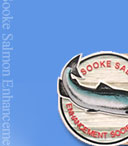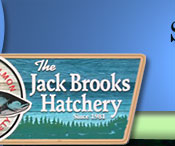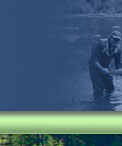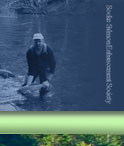I. Main Objectives:
Projects range from one or two day work parties to seasonal chores in connection with raising fry from eggs to long term studies looking into ways and means of enabling fish to access the Sooke River above the falls.
All projects are derived from the Objectives stated in our Constitution. These are:
1. To undertake to operate and maintain a Salmonid Enhancement Program Hatchery at Sooke for the purpose of enhancing salmon populations in local streams.
2. To provide Salmon eggs for the Fisheries and Oceans Classroom Incubation Program and provide guided educational tours of the Hatchery for school programs and the general public.
3. To conduct Stream Rehabilitation and Enhancement work to provide maximum spawning and rearing water for wild salmon stocks.
We are committed to “FISH FOR OUR FUTURE”
II. Projects:
Some Highlighted Projects
1. Hatchery and Related Operations: We raise from eggs up to five hundred thousand Chinook Salmon plus two hundred thousand Coho Salmon and twelve to fifteen thousand Steelhead each year. We also operate a sea pen in Sooke Harbour, and feed (twice a day) up to one hundred thousand Chinook Salmon for two months from Mid - May to mid - July, each year. A lake pen is often operated from July to April each year for the Coho Salmon (the Coho often live in fresh water for a year before migrating to sea). We produce up to one hundred thousand and feed them 3-times a week for 9 months at the lake pen.
2. Water storage: We operate three water storage dams to augment summer water flow in DeMamiel Creek. Volunteers must hike into the headwaters of the creek to open & close the valves each summer and winter in order to use and refill the storage dams.
3. Upper Sooke Re-Stocking Plans; Each fall we move adult Chinook & Coho Salmon above the falls on the Sooke river (up to 150 pairs Coho & Chinook) and let them spawn naturally. We try and find were they have spawned in the fall, mark the site, revisit that area in the late spring and trap the salmon fry. This gives us a good indication of the survival rate for the preceding winter. Depending on water flows and growth rates, we release salmon fry from the hatchery in the upper Sooke River, Chinook Salmon in May and Coho Salmon in late June. We also monitor the growth of these Coho Salmon in early spring.
4. Step Pool Project: In 2004 the Society contracted Terra Remote to carry out a topographical laser survey of the falls and potholes. The project was completed in January 2005 and the digital imagery maps .5 meter contours on approximately a kilometre of the Sooke River above the current park. This is an area where falls present barriers to Salmon and steelhead reaching the upper Sooke. The upper Sooke presents a potential of a further 26 kilometres of spawning waters, not including the Leach River and other systems that feed the Sooke River. Currently the Society is working with a number of partners to conduct a feasibility study of constructing ladders or tunnels that would enable salmon and steelhead to bypass the barriers and enable the Sooke River to become one of Island's great salmon and steelhead rivers.
|



















